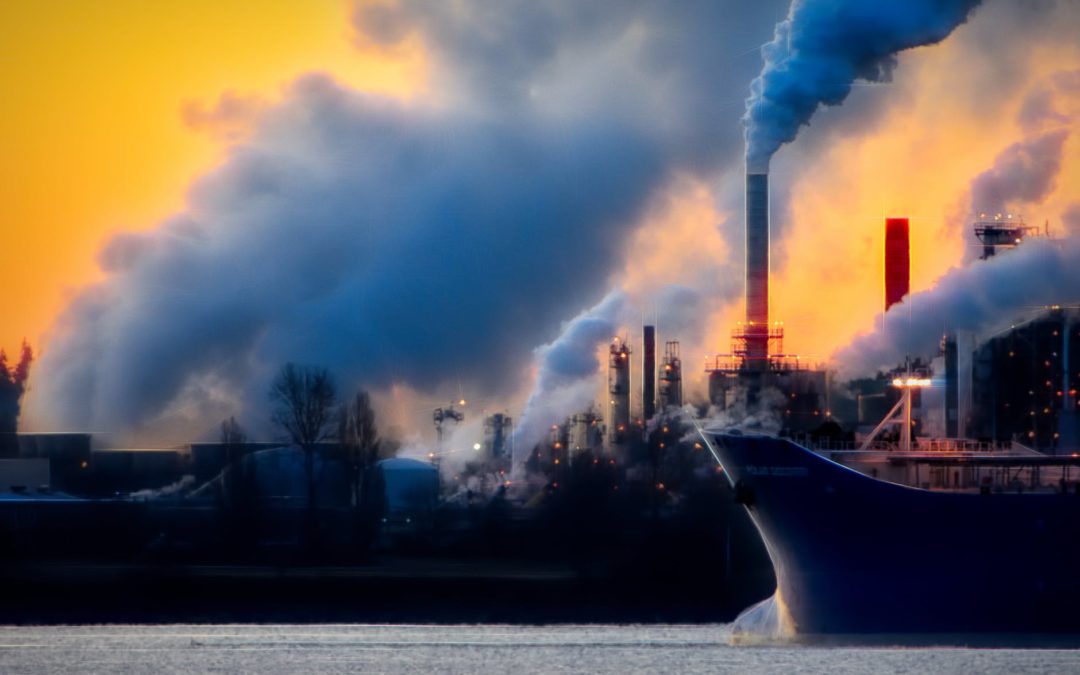Our business revolves around accounting for and reducing greenhouse gas emissions in organisations. Why the importance one might ask? It is fairly simple why we should act in our personal lives, communities and work environments to reduce our greenhouse gas emissions: Global warming, brought about by elevated levels of greenhouse gases, is real, it’s happening and it threatens the ecosystems upon which our existence relies.
Global warming
So what is global warming? Global warming refers to the increase in global average surface temperatures and its projected continuation. And to explain global warming we need to start with Earth’s natural temperature control.
Three factors control Earth’s temperature: incoming solar radiation from the sun, reflection of this solar radiation back into space and finally the chemical composition of the atmosphere.
Little has changed over the past century in the first two factors so we need to turn to the third factor to explain why our temperatures are rising. This brings us to the question often asked: what are greenhouse gases?
Greenhouse gases
Certain atmospheric gases known as greenhouse gases are critical to our temperature control system as they trap and hold the heat that is generated from the solar radiation that is not lost through reflection. By trapping heat, our greenhouse gases warm our atmosphere and without these atmospheric gases the average surface temperature of the Earth would be about 33 degrees C lower. Naturally occurring greenhouse gases include water vapour, carbon dioxide, ozone, methane and nitrous oxide, and together create a natural greenhouse effect.
Carbon dioxide is the main culprit in rising greenhouse gases. The atmospheric concentration of carbon dioxide has increased from a pre-industrial level of about 280 ppm (parts per million) to 391 ppm in 2012. This concentration far exceeds the natural range of 180 to 300 ppm which has occurred over the last 650,000 years.
In nature, carbon dioxide is balanced in the carbon cycle which moves carbon between the atmosphere, ocean, land and biota through processes of photosynthesis, decay, volcanic activity etc. This keeps atmospheric carbon, or carbon dioxide, in check. However since the beginning of the Industrial Revolution human activity is creating an imbalance in the natural carbon cycle by artificially transferring land reserves to the atmosphere through burning of fossil fuels like coal, oil, and natural gas as an energy source. In addition to this humans are removing the mechanisms such as forests to return carbon back to the biota and land.
This imbalance is causing our elevated global average surface temperatures, what we call global warming.
Climate change
As our climate is influence by temperature, global warming is in turn changing our weather patterns. This brings us to climate change which by definition is the shift of weather conditions over time.
Unfortunately climate change feedback processes amplify global warming. For example, Earth’s light ice caps reflect solar radiation back into the atmosphere, while darker water bodies absorb solar radiation. With warming global temperatures, ice caps melt which decrease reflective surfaces and increase absorptive surface areas. This increases the absorption of solar radiation resulting in amplified warming. This is one example of a positive feedback; there are many more.
These secondary effects are an area of great concern in the scientific community as little can be done to reverse these changes. More reason to act, and to act quickly.
We are headed for a collision with nature second to none. For a long time, scientists have pegged a 2oC global average increase as the limit to which we can stay within a ‘safe’ environment. Over this figure we run the risk of destabilising our temperature controls and climate systems with disastrous consequences. There is a huge shortfall in the reductions in emissions we need to stay within this limit and where we are going. Even with current CO2 concentrations in the atmosphere today we already face certain temperature increase and impacts. The longer we wait to act, the wider the emissions gap grows and the more difficult it will be to mitigate and adapt to the impacts of climate change.
So what has this got to do with business? Reduction in greenhouse gas emissions needs to come from all emitters, including business. Businesses emit greenhouse gases, some more than others. Businesses use electricity in their buildings and operations, fuel in their transport; and create enormous demand for carbon intensive activities such as air travel and paper production. To reduce national emissions reduction commitments governments will use a carbon taxation stick to drive emission reduction in business.
However, organisations with foresight will recognise the carrot in emissions reduction and see value in embracing a move to the low carbon economy. Solid mitigation plans to reduce emissions will reduce costs in a business. Adaptation plans will safely navigate businesses into a resource restrained economy and society. The companies who put long term sustainability at the heart of their business will not only be ready for the low carbon economy but they will be best placed to survive within and benefit from the opportunities this new world will offer.
So where do you start? The Carbon Report has the greenhouse gas measurement and accounting skills an organisation needs plus years of experience in reduction strategy and planning. Give us a call on +27 21 403 6411 to see how we can help you.

